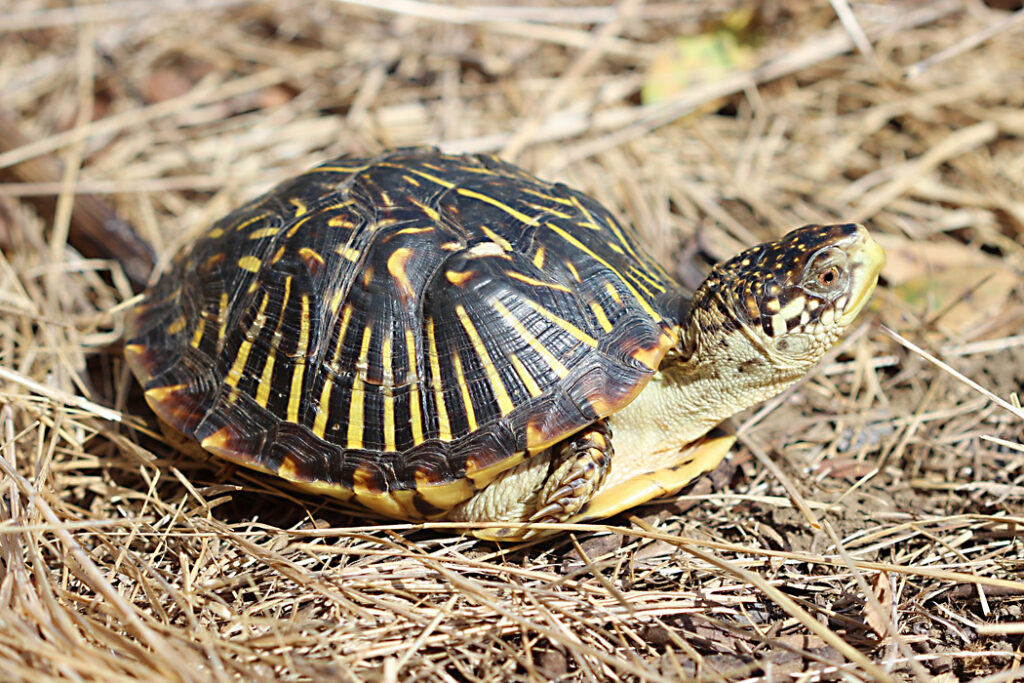
This inaugural Land Stewardship column by Clay Steele, Lee County Environmentalist and Outdoor Education Specialist, addresses the thorny issue of how things should look according to human aesthetics versus the reality of the restoration process. Each month, this column will feature area projects that have restoried and rejuvenated publicly owned land.
If you’re a regular visitor to F.W. Kent Park just west of Iowa City, you may have noticed that there always seems to be some area dug up or cleared out. Why, you might ask, would those who claim to love nature so much not be able to just leave it alone in its natural state?
It all depends on your definition of natural. The work you’ve seen at Kent Park is an effort to return to an ecosystem more closely resembling that seen in Iowa before European settlement. The reason we do not leave the park alone is because it was not left alone in the first place.
History of the Area
Iowa is now one of the most environmentally altered states in the nation, with less than one percent of its land unaffected by agriculture or development. Farming is the most obvious form of alteration seen in Iowa. Most of Kent Park was farmed at some point in the last 150 years, which significantly degraded the ecosystem of the area. Prairies were grazed, allowing some species to thrive or invade, while others were decimated. Woody plants later took over, and native grasses and flowers were often drowned out. Some areas of the park were planted with row crops, which led to the erosion of the topsoil from the hill slopes, filling the valley wetlands below with sediment.
Restoration Started in the 1980s
Efforts began in the late 1980s to restore parts of the park either to their original state, to a habitat better able to sustain more diverse populations of flora and fauna, or to natural areas of educational value. In the long run, endangered species found in Kent Park, such as the ornate box turtle and the lady’s tresses orchid, will benefit from these improvements. They will bring about an environmental microcosm of Iowa that is much more natural and of great educational value.
A number of projects have improved the park’s forests and remnant prairies and savannas, and to restore wetlands and prairies. It’s not always easy to see what is being accomplished if one does not fully understand the process used in creating restored areas.
Over time, invasive species began to move into the area. Outside of fire and violent windstorms, selective cutting is the only way to maintain the healthy, natural state of the forest. As a result, timber stand improvement is done on a planned basis to maintain Kent Park’s forest ecosystem at an ideal density and species composition.
Work commenced on the restoration of the prairie and wetlands in the early 1990s. An impact study was completed beforehand to insure that no rare native species would be harmed. It was necessary to remove the mixed black-locust forest planted 60 years earlier to recover the prairie. To the casual observer, it would have appeared that perfectly good trees were being cut down. However, while black locust is a native species, it’s considered invasive, so these trees had limited native ecological value. They were cut and the stumps were removed. The old bur oaks and cottonwoods were left standing where possible.
Work was also done in the eastern watershed of the park. Two to three feet of siltation had to be removed to recover the original land surface and eliminate the seeds of the highly invasive reed canary grass. With any luck, the soil discovered underneath will still contain the seed bank of native wetland plants, which can remain viable for more than a century. In addition to reconstructing the land surface, box elder trees had to be cut down, leading to a disturbed look to the area. Once again, this sort of manipulation may seem to be in opposition to conservation, but these restoration efforts are necessary to a healthy native ecosystem at Kent Park.
Results Over Time
Any project like this requires patience: patience in discovering what is truly “natural” to an area, patience in watching the disturbance that goes with any restoration, and patience in waiting for an ecosystem to recover. It is important to keep in mind that while it takes only a few short years for us to restore a specific damaged area to its previous diversity, left alone it would take nature thousands of years to accomplish.
For more info, go to JeffersonCountyConservation.com.
